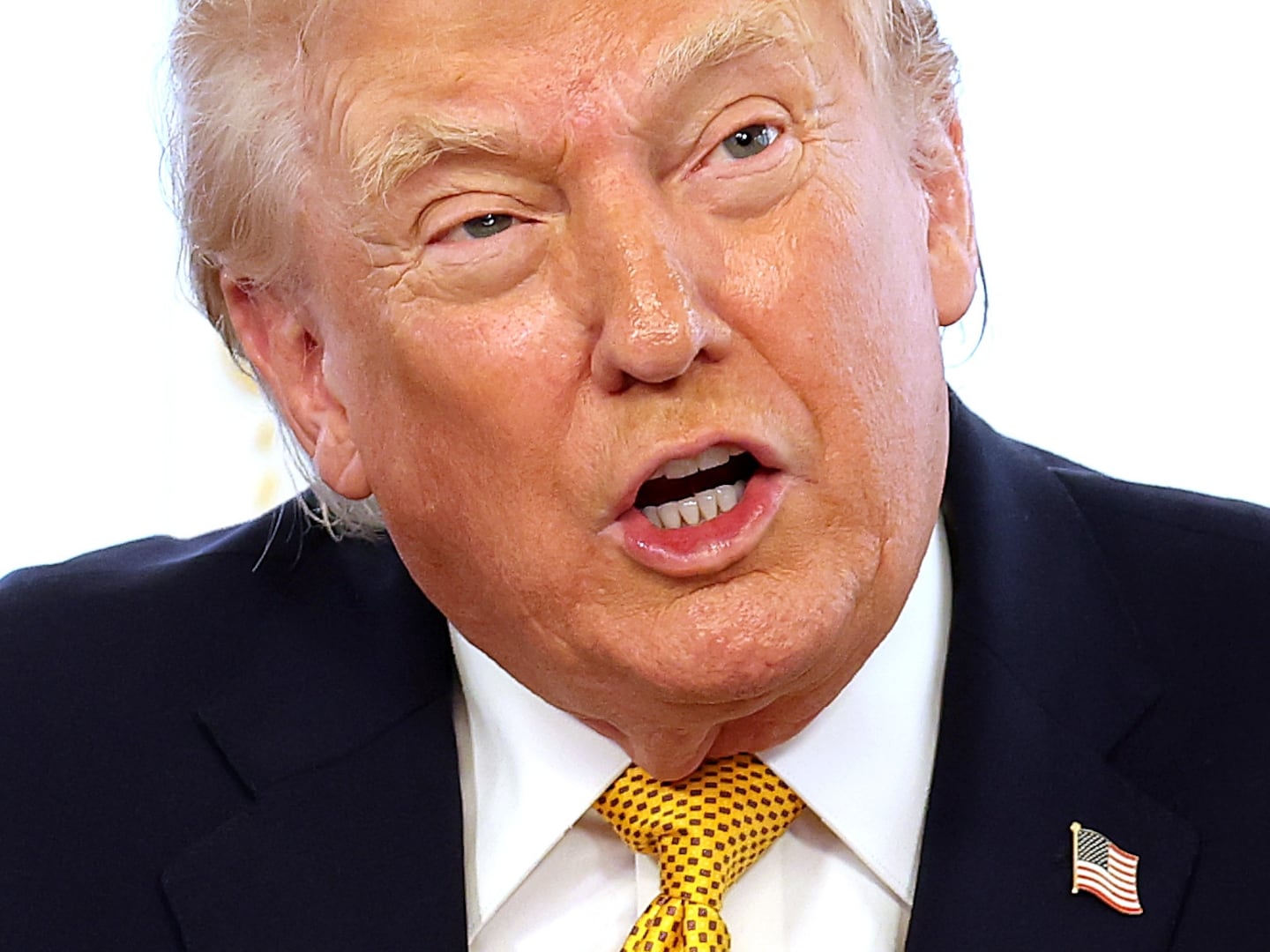If you’re getting the sense that this election—which has been largely overtaken by a flamboyant reality-TV personality who can’t seem to stop talking about how fantastic, tough, and sexually alluring he is—is starting to feel like a joke, then perhaps it’s fitting to get your political advertising from a comedy website.
Funny or Die—a popular site, previously known for generating more frivolous fare such as “Lindsay Lohan’s eHarmony Profile” or “Charlie Sheen’s Winning Recipes”—was launched by actor Will Ferrell and writer/director Adam McKay in 2007. Eight years on, Funny or Die has potential to emerge as a player in the big-money political lobbying game.
Seriously.
Just as the presidential campaigns are heating up, the comedy website is headed straight into virgin territory—carefully embedding themselves into the maelstrom of 2016 (and other political misadventures) in a manner that merges election-year rapid response, Hollywood talent, campaign finance law, political advocacy, sponsored content, and (of course) web comedy.
Funny or Die has also long been in the business of political content and satire. In the summer of 2008, after the McCain campaign ran an anti-Obama ad featuring an unflattering reference to Paris Hilton, Funny or Die recruited Hilton to throw shade at “that wrinkly white-haired guy.” In response to California’s 2008 ban on same-sex marriage, the site released the star-studded “Prop 8—The Musical.” In late 2013, the Funny or Die crew disseminated a leaked “sex tape” of actress Alyssa Milano—that turned out to be all about reminding viewers about the bloodbath and chemical attacks in Syria.
“If people end up learning something about the crisis in Syria, that’s a good thing—even if I had to do a sex tape to lure them in,” Milano said at the time.
But in April, Funny or Die announced that they had poached Brad Jenkins from the Obama White House, where he had served as associate director in the Office of Public Engagement. He was Funny or Die’s point of contact when they worked together in early 2014 to mount that famous “Between Two Ferns” episode in which Zach Galifianakis “interviewed” President Obama. The segment included a link to Healthcare.gov, which quickly made Funny or Die the release date’s biggest source of referrals to the Affordable Care Act website—right at a time when Obama’s signature law needed to be rescued the most.
Roughly a year after Obama’s “Between Two Ferns” dropped, Jenkins was tapped to open Funny or Die’s Washington, D.C., bureau, to supplement offices in New York City and Los Angeles, the two cities where the viral videos are made and the celebrity friends and talent are recruited. Jenkins works out of his new office (just a walk across the street from The Washington Post), coordinating political content and branding strategies as a “one-man army,” as colleagues have described him. (Plans to grow the D.C. office beyond Jenkins are on ice.)
His primary responsibility is to work with “partners” to brainstorm, and then produce, lighthearted videos that promote a cause, piece of legislation, or even candidate. (The partner is credited and namechecked on the video, just like any other instance of branded content.) Once an agreement on the script is reached, the partner pays up and the Funny or Die creative team gets to work. Think of it as political “sponsored content,” created by people with sketch comedy and improv backgrounds.
So, yes, if you head a 501(c)(4) or one of the myriad presidential campaigns, Jenkins will likely take a meeting with you—even if you aren’t inclined to the same left-leaning tendencies that much of Funny or Die’s content shares.
“We’ve heard from organizations and candidates from both sides of the aisle [this election cycle],” Jenkins told The Daily Beast. “We’ve definitely gotten interest from groups and campaigns that are not progressive. We are not only looking for progressive groups that have an agenda, in the same way that our company in LA isn’t looking to work with just progressive brands…For instance, one of the issues we’ve been in talks with is doing something around criminal justice reform, which has very strange bedfellows—something where Van Jones and Rand Paul are on the same side.”
Jenkins couldn’t reveal exactly which 2016 campaigns or super PACs had approached him—but at least one Republican camp (with a lot of cash to spend) has expressed interest.
“We emailed a while back,” Tim Miller, communications director for Jeb Bush’s 2016 run, told The Daily Beast. “No plans on the books. But always looking for Jeb to reach broader audiences so would certainly be open to it if the right opportunity arose.”
As they navigate the harsh and more inadvertently comical terrain of this election season, Funny or Die D.C. was sure to retain the services of a lawyer with an expertise in campaign-finance law. Her name is Rebecca Gordon, a partner at the international firm Perkins Coie who previously worked as deputy general counsel to Obama for America. She is the “woman who is going to basically keep us out of jail,” and keep Funny or Die from running afoul of the FEC, they’ve joked.
“There are a lot of campaign-finance rules around on what can and can’t be said, what constitutes grassroots lobbying, or lobbying in general, naming specific things, having certain images, etc.,” Jenkins said. “She works on every deal that comes up [and looks at scripts]…making sure we’re protecting ourselves, and our partners, as well.”
One recent project that Gordon advised on was “The Dealbreakers,” a Funny Or Die bit from mid-July that knocked Republicans as chicken-hawk warmongers for trying to kill the (now legislatively un-killable) Iran nuclear deal. The video, which stars Peter MacNicol (Ally McBeal), was made with and paid for by New Security Action, a 501(c)(4) group that pushes “progressive solutions” to national security issues. It was also promoted online by the liberal nonprofit MoveOn.
“We knew that this was going to be a very tough fight, we knew that opponents of the Iran agreement were going to be aggressive,” former Democratic congressman Tom Andrews, who co-founded New Security Action, told The Daily Beast. “We needed to find as many ways—unconventional, and otherwise—as we could to engage people…The question was: How can we reach as many people as possible, beyond the so-called Beltway? So we talked to the Funny or Die people, and we talked about what the options might be. How could they use humor, something to get traction on social media.”
Andrews worked closely with Jenkins and Funny or Die to develop the script in a creative back-and-forth. The video came together in a matter of weeks.
Of course, not all of Funny or Die’s high-profile political ambitions will ever move past the drawing board. Sen. Lindsey Graham definitely wasn’t into it, for instance.
“There was a video we were trying to get together about the candidates who were left off the [first] Republican debate, like Lindsey Graham,” Owen Burke, Funny or Die’s editor in chief of content in Los Angeles, said. “We [reached out but] his campaign wasn’t into it…[The video] would have literally had him sit at a kids’ table while the debate was going on in the next room…at a kid’s birthday party.” (The senator did, however, opt to shoot a viral video with Independent Journal Review, in which he destroys his cellphone.)
“This is a business outgrowth of the work that we started doing specifically in D.C. [before Funny or Die DC was founded],” Mike Farah, president of production at Funny Or Die, said. “If you’re trying to reach a younger audience that obviously isn’t watching NBC Nightly News and the [political ads] that go along with it, Funny or Die could be a great option…That’s not to say that every person who reaches out to us is going to be a perfect fit. And that’s fine. We’re not trying to take over the world here.”
In July 2013, Farah had joined Amy Poehler, Kal Penn, and other Hollywood stars at a White House brainstorming session with President Obama to talk about how to get young people to sign up for Obamacare. “It kind of kicked ass,” Farah told me at the time. His site went on to publish a bunch of pro-Obamacare segments starring movie and TV stars—this series of videos obviously climaxed with the collaboration with the Obama administration on “Between Two Ferns.”
Farah kept in touch with Jenkins, and soon enough offered him a job. Several Funny or Die staffers have described the D.C. office as Farah’s “brainchild.”
“Our biggest branded entertainment client of all time was the White House,” Farah said. “So I started daydreaming about what if we did try to make this an official thing. Not for the White House, because the White House has no money. But for people in the world of politics, especially with the election coming up, I felt it was a natural evolution.”
Farah and his colleagues aren’t ignorant to some of the more pervasive criticisms leveled against them, particularly by conservative media outlet. “SHOULDN’T ‘FUNNY OR DIE' JUST GIVE IT UP AND BECOME 'LIBERAL OR DIE?’” a 2010 Breitbart headline blared. After all, since so much of comedy and satire is inherently defined by Sticking It To The Man, shouldn’t a comedy website’s role be as a cudgel to all political power, not an accessory to some of it? Getting so directly involved with super PACs and presidential campaigns may only complicate matters further.
But as Farah said, Funny or Die is a business—and leadership sees this as little more than a natural expansion.
“Now, all you hear about is branded entertainment and branded content,” Funny or Die’s outgoing CEO Dick Glover said. “So we saw this opportunity in this more narrow arena, if you will, that a [political] cause or a position or a person is no different than a brand.”
And beyond the silly videos and cash to be made, Funny or Die is no stranger to explicitly taking a political stand, even a decidedly unfunny one. In December 2013, Shezanne “Shez” Cassim, an American citizen and amateur comedian, was jailed in a maximum-security prison in the United Arab Emirates, where he had been detained since April of that year. His crime was posting his comedy video to YouTube. The 19-minute video—which parodied Dubai’s clique of gangster-wannabe teenagers—was deemed a threat to the Arab country's national security under a then-new cybercrimes law.
Cassim was beginning to lose hope, until his sister got him a message that, he says, changed everything: “The guys at Funny or Die are all behind you.”
When Funny or Die staff heard that a random young Minnesotan (who happened to be a Funny or Die fan) was rotting in jail for doing what they did professionally, they felt they needed to act. Ferrell and McKay rounded up celebrity friends and fellow comedians to launch a “#FreeShez” campaign to raise money for his legal defense. In solidarity, they posted the following video to raise awareness:
“This was the turning point,” Cassim, who was released in January 2014 after nine months behind bars, told me after returning to American soil. “It’s when I finally felt hopeful. To have these superstar celebrities supporting me, I felt safe.”
If Funny or Die can engage in the occasional international human-rights campaigning, then, hey, why not get their hands dirty with an overcrowded election starring Donald J. Trump?
“In 2008 and 2012, the election was decided by young people—the Obama coalition, if you will, came out in a way that they never had before,” Jenkins said. “Whether you’re a Democrat or Republican, there is a responsibility all of us have to ensure we are doing everything we can to bring up young people’s perspective. And there’s no better way to engage young people and get them excited and interested [in politics] than comedy.”






